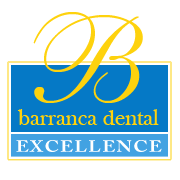[image_frame style=”framed_shadow” align=”right” alt=”Cavities are a common, but avoidable dental problem. | Irvine Dentist Neda Khodai, Barranca Dental – An Irvine Tradition of Dental Excellence” title=”Cavities are a common, but avoidable dental problem. | Irvine Dentist Neda Khodai, Barranca Dental – An Irvine Tradition of Dental Excellence” width=”220″ height=”150″]https://www.barrancadental.com/wp-content/uploads/2012/01/drill-dentist.jpg[/image_frame]
When visiting the dentist, hearing “you have a cavity” is probably on your list of top 5 things you wish they wouldn’t say. Dental cavities are by no means a new development, with fossil records showing that people have been bothered by them for thousands of years. More recently, however, the cavity rate has been increasing, despite technological advances in dentistry. Read ahead to learn more about the causes of cavities, what they do to your teeth, and tips on how to prevent them from Irvine Dentist Dr. Neda Khodai.
Cavity Causes
A cavity is an infection of your tooth, caused by the combination of foods high in carbohydrates (sugary foods especially!) with the bacteria (plaque) that resides in your mouth on your teeth. Not all of the bacteria in your mouth is bad, but bacteria belonging to the S. mutans, L. casei, L. acidophilus, and A. naeslundii families are responsible for cavities. Eating foods high in sugars, combined with improper dental hygiene, will cause these bacteria to proliferate, and ultimately form a cavity.
What Happens to My Tooth?
As the bacteria in plaque reproduces, it decreases the PH level of plaque, and turns it into a stronger acid. This acidic coating slowly dissolves the protective enamel of your teeth and creates a hole (cavity). These holes are typically painless, and may go by unnoticed (except by your dentist!) for large periods of time. The cavity will increase in size, and cause tooth decay. As your teeth decay, the internal material of your teeth dissolves, the hole expands, and eventually causes tooth loss.
How Does a Cavity Get Fixed?
The steps to fix a cavity depend on how much damage has occurred. If the cavity is caught early, a simple procedure known as a filling is conducted. Dr. Khodai (or your dentist) will first remove any decayed or destroyed tooth material with a dental drill, then fill the excavated area with a bio-compatible filling to maintain the tooth’s structure and strength, as well as to preserve the appearance of your smile.
If the cavity has caused extensive damage to your tooth and destroyed a large portion of its structure, your tooth may be too weak for a filling. The destroyed areas will be removed with a drill and other tools, then repaired by fitting a “crown” over the missing section of tooth. Don’t worry, you won’t look like a gold-toothed pirate, as modern dental crowns are matched to your natural tooth colors and free of dangerous heavy metals.
In a situation where the cavity has caused such damage that the nerve in your tooth has died, the entire central section of your tooth, along with the dead nerve and blood vessel tissues, is extracted and the decayed sections of your tooth is removed. The root of your tooth is replaced by a special sealant material and the rest of the tooth is repaired with fillings and crowns if necessary.
Cavity Prevention
Preventing cavities are easier than ever thanks to on-going advancements in dental technology, but the bulk of the work is up to you. Eating properly, avoiding sugary foods and drinks, and not smoking are some of the best preventative measures. Regular dental hygiene is extremely important. Ensure that you brush at least twice a day and that you floss properly daily. Professional dental cleanings at your dentist’s office every six months is not only necessary to prevent cavities, but to detect them early on.
Foods which are very sticky or chewy (like caramel) are one of the chief causes of bacteria buildup on teeth. If possible, rinse your mouth, brush your teeth, or use sugar-free ADA approved chewing gum after consuming these foods.
Fluoride has been scientifically proven to fight cavities, but it is recommended to ask at your dental office on product suggestions and applications before attempting to use a fluoride treatment.
Special Bonus: Cavity Lingo
After our lesson on teeth numbers, people wanted to know more about the secret language at your dental office. If the next time you are getting your regularly scheduled cleaning and hear the dentist refer to a series of numbers and letters, they may be describing a cavity. The number is your tooth number, and the letter refers to the different surfaces of your tooth. “M” mesial is the front surface of your tooth, and “D” distal refers to the back. “O” is for occlusal, and is the biting (or top) surface on your molars and premolars. “I” stands for incisal, and is referring to the biting edge of your front set of teeth, the incisors and canines. “B” means buccal, and is the surface of your tooth that is closest to your cheeks, while “L” is lingual, the surface of your tooth facing your tongue.
If your dentist were to say to take a note about “3MOD”, you might have a cavity on your third tooth (the upper right first molar), and it involves the front, top, and back surfaces of your tooth.
While it is great to know and practice this identification scheme, let’s hope you never have to use it.
Contact Us!
If you believe you may have a cavity, or just need a regularly scheduled cleaning, it’s time to set up an appointment with Irvine Dentist Dr. Neda Khodai. Call us at 949-553-1111 or click below to get in touch with Barranca Dental Excellence. Se Habla Español!
[button size=”medium” link=”https://www.barrancadental.com/schedule-an-appointment-online/”]Schedule an Appointment Online[/button]
Happy Lunar New Year!

